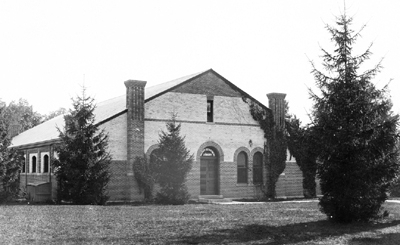History of MSU Army ROTC
The Department of Military Science at Michigan Agricultural College was founded during the school year 1884-1885 with the assignment of the first active duty Army officer as the Professor of Military Science and Tactics. Although military training had been present on campus before, there had been no structured program with government sanction until the assignment of a young infantry officer, Lieutenant John A. Lockwood, in the fall of 1884.

Lieutenant Lockwood was detailed to Michigan Agricultural College (MAC, as MSU was then known) at the request of the college administration at a time when the government was assigning professional soldiers to land grant colleges for the purpose of improving the military instruction. A veteran of frontier service in Dakota and Montana Territories and a recent graduate of the Cavalry and Infantry School at Fort Leavenworth, Lieutenant Lockwood quickly set about the task of organizing the cadet corps, revising the instruction and supervising the construction of the Armory, which stood on the site of the present music building.
In 1888, military science became a compulsory course for all students except seniors, and one year later the curriculum was placed under the college marking system. Also in 1889, two 3-inch field guns for "fast battery practice" were received marking the historical beginning of artillery affiliation at MAC.
In the early 20th century, the college band was established and came to the Military Science Department for training in marching and drill techniques. This association developed to a point that a band room was a part of the 1911 addition to the Armory.
With the passing of the National Defense Act in 1916, the Student Army Training Corps (SATC), the forerunner of ROTC, was established at MAC. In 1922, twenty students received commissions as reserve second lieutenants marking the beginning of the school's long history in providing officer appointments through ROTC.
Beginning in 1922, LTC Thomas L. Sherburne, a newly appointed Professor of Military Science and Training, pressed for the construction of a new armory. In 1925, the state legislature appropriated $225,000 to build the new armory and construction began in 1926. The new building was named "Demonstration Hall" due to its intended purpose of providing a location for agricultural and scientific displays as well as a site for military training. Demonstration Hall has been the home for ROTC on campus since its completion in 1927 and has served many other campus activities through the years, such as: basketball games, hockey games and intramural sports.
By 1941, the cadet regiment was over 3,000 and one-third of the junior and senior class was enrolled in advanced ROTC. More than 6,000 MSC alumni and former students entered the armed services for World War II and over 300 of those lost their lives.
In 1954, all officers received academic rank from the university as assistant professors. Prior to this, only the Professor of Military Science held academic rank. Enrollment had been growing since the end of World War II and by 1957, over 2,000 cadets were enrolled in ROTC with 20 officers staffing the department. In 1962, mandatory enrollment in ROTC for freshman and sophomores ended and enrollment dropped dramatically. Involvement in the Vietnam Conflict stabilized and increased enrollment; however, after 1972, enrollment reached all time lows.
Continued stable enrollment in the program was a struggle throughout the 1970. Growth was stimulated by additional scholarship opportunities, the enrollment of women in ROTC after 1973 and in 1980, the implementation of the Simultaneous Membership Program to allow joint participation in ROTC and reserve component units. Today, the Spartan Battalion, under the auspices of the United States Army ROTC Cadet Command, has grown to approximately 150 cadets and boasts a reputation for quality lieutenants throughout the Army.
The Department of Military Science has undergone many generations of change and its history reflects the political, social and economic realities of the times. Graduates of the program form a core of distinguished and successful alumni of the university in both, the civilian and military community. This includes seven general officers, and more recently, State Senator William Sederburg, class of 1973. The traditions of the department and the mission of the Michigan State University Reserve Officers' Training Corps are best expressed in the Spartan Battalion motto, "Training to Lead".

